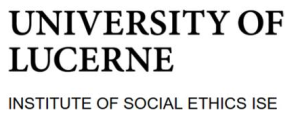By Behruz Davletov, Uma Kalkar, Salwa Mansuri, Marine Ragnet, and Stefaan Verhulst
This article was originally published on the blog for Data & Policy (cambridge.org/dap), a peer-reviewed open access journal exploring the interface of data science and governance. Read on for five ways to contribute to Data & Policy.
- Prediction: Data is used to monitor and plan for likely events and risks both prior to and during the conflict;
- Narratives: Data plays a critical role in both constructing and countering misinformation and disinformation;
- Infrastructure Damage: Data can be used to track and respond to infrastructure damage, as well as to associated human rights violations and migration flows;
- Human Rights Violations and Abuses: Data is used to identify and report human rights abuses, and to help construct a legal basis for justice;
- Migration Flows: Large-scale population flows, both within Ukraine and toward neighboring countries, are one of the defining features of the conflict. Data is being used to monitor these flows, and to target humanitarian assistance;
- Humanitarian Response: In addition to the above, data is also being used for a wide variety of humanitarian purposes, including ensuring basic and medical supplies, and addressing the resulting mental health crisis.
Prediction
Pre-conflict data is being used to predict the risk and propensity of future violence. Data analytics can help identify risk factors for future conflict, allowing for earlier interventions to prevent violence. For instance:
- Satellite imagery provided by applications like Google Maps was used prior to the invasion of Ukraine to monitor the movements of Russian troops massing at its borders. This continued after the start of the war, with online users tracking the evolution of Russian troops on Ukrainian territory through the use of satellite imagery.
- The Armed Conflict Location & Event Data Project (ACLED) tracks, visualizes, and reports on conflict and violence around the world, including with its Early Warning Research Hub that assesses conflict, actor, and volatility changes to anticipate heightened tensions. ACLED created a special hub for tracking incidents in Ukraine. Starting from 2018, the visual dashboard gives a timeline of the events leading up to the invasion.
Narratives
The Russian-Ukrainian war is unique because it is being fought not only on the ground in Donetsk and Luhansk, as well as many other parts of Ukraine, but also online. The unprecedented use of online platforms and data to spread information (as well as misinformation and disinformation) about the conflict has been deployed by actors on both sides. Data is also being used to track narratives about the conflict. This includes identifying and mapping misinformation and disinformation as well as understanding how various audiences receive and engage with information about the conflict. Examples include:
- Newsguard, a fact-checking entity, has put together a tracker that lists all of the websites sharing disinformation on the Ukraine-Russia conflict and highlights the most popular false narratives circulating online. To date, the website has published more than 230 sources, emanating from both sides.
- Researchers from the University of Warsaw looked at sentiment analysis and narrative trends pertaining to the war in Ukraine from January 2022 to March 2022, trying to determine changes in emotions before and after the war in Ukraine. Their research showed that sentiment analysis “makes it possible to detect the change dynamics that are difficult for a human being to capture (a person analyzing source materials).”
- The Council of Europe conducted a situation analysis on the presence and impact of hate speech on the welfare of Ukrainians. The lack of national policy regulating hate speech monitoring and inadequate investigation of hate speech complaints complicate resettlement and integration of refugees across Europe. They provide recommendations to address this gap in data collection of hate speech incidents, ways to improve responses, and steps to bolster awareness and education around hate speech at a higher level.
Infrastructure Damage
The war has extensively damaged infrastructure in Ukraine, including roads, bridges, water and electricity supplies, and hospitals. Data collected about infrastructure damage can be used to target humanitarian assistance and support post-conflict rebuilding efforts. Examples include:
- The UNDP’s machine learning algorithm, developed to help identify and classify war-damaged infrastructure. This model is replicable by the UNDP in other countries to help with post-conflict reconstruction. The model uses text mining to extract information from reports and categorize it by type of infrastructure. The UNDP Ukraine country office is also applying the model to Twitter data to determine the locations of damaged infrastructure and gauge the needs of vulnerable populations.
- Public sharing of satellite images and maps helps OSINT analysts to improve their “situational awareness” of destruction and war crimes in Ukraine for real-time documentation. For example, the HALO Trust demining organization has been using OSINT from social media and satellite images and GIS to find areas with “explosive remnants” and survey property damage so that aid organizations can move safely in Ukraine and help with post-conflict reconstruction of cities.
- Night lights data collected by NASA’s satellites helps to identify areas of conflict and damage in Ukraine, which is useful for relief and peacekeeping groups. The United Nations Institute for Training and Research Operational Satellite Applications Programme (UNITAR-UNOSAT) uses this data to track conflicts in order to better provide aid where it is needed most.
- Satellogic has provided a Dedicated Satellite Constellation service to provide high-resolution and video satellite intelligence for the area to provide “detailed, timely, and scalable” information about field conditions to help with post-conflict reconstruction.
Human Rights Violations & Abuses
Human rights violations and abuse have been extensively documented throughout the course of the war in Ukraine. Data collected about these violations can be used to support justice and accountability efforts, as well as to target humanitarian assistance. For instance:
- The United Nations Office of the High Commissioner (OHCHR) refers to a method that reinforces states’ responsibility to respect, protect and fulfill human rights by collecting and collating the bigger picture. To understand what has and is happening to civilians in Ukraine, human rights and monitoring officers collect open data, publicly available information, and first-hand accounts of the war in Ukraine to inform decision-making via a data “mosaic.” Collecting and verifying data about destruction, deaths, and responses sets a solid foundation for post-war justice-seeking.
- Out of the 3.7 million refugees that have fled Ukraine, close to 90% were women and children. Nearly two months since the outbreak of conflict, UN Women, along with CARE International, conducted a Rapid Gender Analysis to demonstrate the disproportionate impact the war on Ukraine has had on women and girls. This analysis seeks to highlight the gender dynamics in Ukraine prior to and post the war. The analysis uses secondary data to draw particular attention to the disparities, vulnerabilities, and risks that women and girls in Ukraine have experienced as a result of the intervention. For example, gender-based violence was rampant in Ukraine even prior to the Russian invasion, with 75% of women in the country stating that they had faced gender-based violence before the conflict. Gender-based violence has increased due to military conflict, with close to 82% of women stating that sexual harassment and assault in public spaces have increased.
- Conflict Observatory is a new effort to document and publicly share evidence of war crimes and atrocities committed by Russia in Ukraine. The project is a collaboration between technologists, analysts, and academics, who are using geospatial technology and artificial intelligence to uncover and map the details of these crimes. The goal is to help bring perpetrators to justice and to deter future war crimes.
Monitoring Migration Flows
Hostilities between Russia and Ukraine have been playing out for nearly a decade, most notably with the 2014 annexation of Crimea, resulting in internal displacement and conflict-fleeing migrants from Ukraine. However, the 2022 aggression has resulted in significant displacement of civilians within Ukraine as well as a large-scale exodus of Ukrainians to neighboring countries — the largest refugee crisis in Europe since World War II. Data on migration flows can be used to support humanitarian efforts for refugees and internally displaced people. Examples of initiatives include:
- The UNHCR’s map to visualize migrations happening across Europe as a result of the war, which shows where refugees have crossed borders. The data portal aims to monitor the Ukraine refugee situation and reflect recent movements of refugees in order to better aid humanitarian actions. As of 5 July 2022, over 8.5 million border crossing instances have been recorded from Ukraine since the start of the war.
- The Displacement Tracking Matrix, an initiative by the International Organization for Migration (IOM), was generated through a “rapid representative survey of the general population in Ukraine to gather initial insights into internal displacement and mobility flows, and to assess local needs.” Close to 2,000 respondents were interviewed using the computer-assisted telephone interview method. Results from the survey were used to ensure that targeted humanitarian actions across the five geographic regions within Ukraine (West, East, North, Center, South, and the city of Kyiv) were provided efficiently.
- Crisis Ready, a research institute run through Harvard University and Direct Relief uses and visualizes data for more evidence-based action by policymakers and humanitarian organizations. Its situation reports and interactive dashboard draws on “anonymized and aggregated human mobility data” gathered from Meta (formerly Facebook) to understand demographic and population density changes in Ukraine and surrounding countries over time compared to the average population 90-days before the target date. CrisisReady is also working with the city of Budapest on data analysis for the refugee response.
Humanitarian Response
Data collected about the war is being used to support humanitarian responses. This includes mapping the conflict to identify areas most in need of assistance, determining which populations are most vulnerable, and tracking the delivery of aid, such as by:
- The United Nations Population Fund (UNFPA), created a “common operational dataset” for humanitarian partners working in Ukraine in the first week of the war back in March 2022. The dashboard features updated population projections by gender, age, and region within Ukraine. Previously, these datasets had not been updated for 20 years, but are now being used to allocate medical supplies, basic needs, and mental health support.
- The Humanitarian Data Exchange (HDX) platform’s Ukraine Data Explorer provides open-source information about refugees, casualties, and funding needs for humanitarian efforts. This information has been used by other United Nations bodies, such as the IOM, to support vulnerable and internally displaced populations within Ukraine.
- The data collected and analyzed by Premise suggests that access to food and fuel is decreasing across Ukraine, and that refugees are settling in host communities without access to proper support. Their data is used for humanitarian activities, as it provides insight into the areas most in need of assistance.
- The EU Agency for the Space Programme (EUSPA) created a data sharing platform that provides access to the Galileo and Copernicus databases to help nonprofits to provide humanitarian support and connect these groups to app developers.
- Clearview AI is providing Ukraine with free access to its database of faces to help with identification of people at checkpoints, morgues, and refugee camps.
Conclusion: Data as a Driver for Humanitarian Response and Peacebuilding
History may be written by the victors but data reveals the truth. The use of data and data collection in peace and conflict efforts are not new concepts, but the way in which data is being collected and deployed as a vital tool in the conflict zone has been significantly enhanced over time. Large-scale data collection conducted urgently and automatically through digital platforms makes it possible to understand the needs of entire communities quickly and more accurately. In an ever-changing war zone like Ukraine, data has been an essential tool for crisis response, peacekeeping efforts, and truth and justice initiatives.While the situation in Ukraine remains fragile, data has proven essential to allowing the timely and targeted dissemination of humanitarian responses. Needless to say, there is still a long way to go in terms of rebuilding livelihoods and working toward a sustainable and just peace. The use of data will continue to be important in efforts to monitor the situation and to provide assistance to those who need it most. The role of data in peacekeeping is likely to continue to evolve as new technologies are developed and new ways of using data are further explored.
***
We would like to thank Jos Berens, Data Policy officer at UNOCHA, Andrew Schroeder, VP of Research & Analysis at Direct Relief, and Michele Giovanardi, Project Associate at School of Transnational Governance, European University Institute for reviewing earlier versions of the article.







